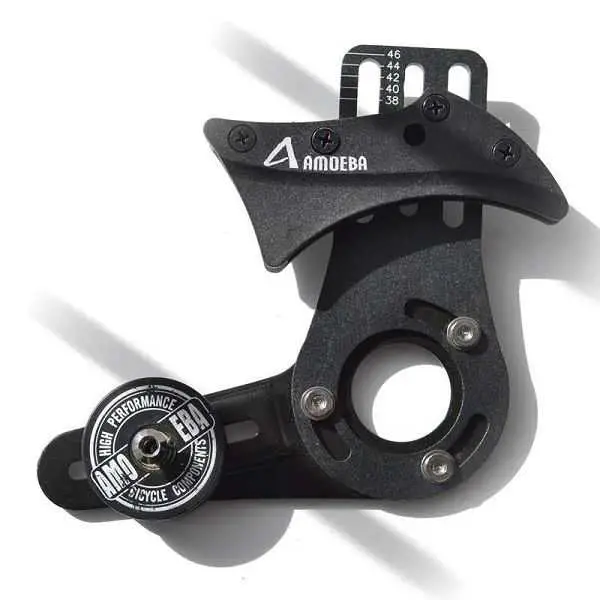Never trust people who say things like, “I’ve been riding for years and haven’t changed a thing. And certainly don’t repeat their mistakes. A bicycle is the same transport that needs competent and, most importantly, timely maintenance. Each part and each unit – these are the elements that are closely linked and provide a comfortable ride. As it performs its job, a bicycle experiences considerable stress, which is distributed between the mechanisms. And it’s the drivetrain that suffers the most. Lack of attention to this node leads to tangible problems: at the most inopportune moment slips the chain on the bike under load, for example.
Needless to say, it creates considerable discomfort when riding? But that’s not all: after the chain slippage begins and other problems that may eventually lead to a complete replacement of the transmission unit. Let’s look at why this happens and how to fix it, as well as how to prevent slipping under load.
Possible Causes
As they say, if you like to ride – love and for the technique to watch. This truth is as old as the world, but for some reason it, many people ignore: after riding in the mud or in the rain leave the bike without attention, and the next day sits on it, as if nothing had happened. But this is for the time being, because sooner or later the owner will not only notice, but also hear that the bike chain slips under load. Why does this happen? The reasons are ridiculously few. One of the most common is inattention to machinery. Dirt, sand, water, and rust accumulate on the drivetrain over time, making it difficult to operate. It is especially noticeable when climbing uphill: you apply effort, pedaling, and at a certain moment the chain slips, which is accompanied by an extremely unpleasant sound.
If you are not watching the transmission, the reason is obvious: it’s time to clean and lubricate the chain. But there are other factors that cause the chain on a mountain bike to start slipping under load. Let’s break them down.
Chain stretching
The bicycle, as well as in the car, has its consumables, which are designed for a certain service life. The number and size of links are carefully calculated by engineers, checked during production. But, as the saying goes, water and stone grind. Over time, under regular and intensive loads, the chain’s teeth can wear out, which leads to chain stretching and, as a consequence, its slippage.
Here you need to be guided by established standards. For example, the length of the bike chain for mountain bikes is 304.8 mm. Unfortunately, it is not possible to tighten or otherwise fix it: only replacement.
Wear on sprockets and cassettes
There is another factor that causes the chain on the bike to start slipping under load at some speeds. It’s all the same time, which spares nothing in its path. Simply put, elementary wear and tear. The cogs are thinning, resulting in the chain simply not clinging to them. But there is another reason why sprockets and cassettes become unusable – mechanical damage. It’s only your impression that the bike didn’t fall hard enough: in fact, the impact can hit the sprocket or cassette exactly (a small stone on the road is enough to do the trick).
Incorrect derailleur adjustment
What are the potential consequences? Let us tell you: the derailleur throws the chain between the sprocket and the cassette. If all this mess is accompanied by intensive pedaling, the chain, getting “into the wrong plate”, slips.
How to correct the situation?
Here it is necessary to start from the initial cause. If you can see the wear of transmission, just change it. In this case, replacement of all consumables: chain, cassette and stars on the system. Only the most experienced cyclist can tell if the sprockets are suitable for further use. Needless to say, that the use of old and new parts together will inevitably lead to their rapid deterioration? It is better to change the whole unit of the transmission.
But it also happens that the chain is not so old and looks decent, but still slips under load. It should be understood that the algorithm for fixing the problem on a high-speed bike is a bit more complicated. To fix one of the common causes (stretching), you have to focus on the standard length of it.
How does chain length affect drivetrain performance?
You measure the chain length with a tape measure. Normally, it should be between 304.8 and 306.4 mm. If the length exceeds the threshold value, you can judge about the stretching of the chain. Moreover, the more its length becomes, the more unbearable it is to ride a bicycle. Enterprising guys artificially shorten the length by squeezing out a few links. This solves the problem, but only for a while. Eventually, the chain still has to be replaced.
Ways to fix the problem
If the chain is worn out, feel free to buy a new set. Before buying, carefully inspect the parts for deformation. Finally, remember the simple rules:
- One cassette is enough for 3 timely chain changes.
- A sprocket has a lifespan of 10,000 to 15,000 km.
And now, as a matter of fact, you can proceed to replace the chain. The main thing – do not hurry and clearly follow the instructions.
Step-by-step replacement
Here, a special tool is useful – a squeezer. On it you need to put a link so that the pin was exactly in front of the axle. To squeeze the pin, you will have to sweat: twist the handle slowly and stand in front of its squeezing.
Now you can put on the new chain, starting with the derailleurs on the small chainrings, keeping in mind the position of the rollers. All that remains is to align the links, clamp the chain and press the axle in.
Installing the Caliper
When the bike chain slips under load at some speeds, you can install a stabilizer. This is a special device that has plastic parts that protect the stars from mechanical damage (riding on curbs, pits, etc.) Installation algorithm:
- Remove the sprockets and connecting rods. At the same time the largest should be on the middle.
- Screw the rokring and find the optimal position of the roller (at 6-inch suspension stroke position – strictly at 12 o’clock, with a smaller – at 11:30).
- Tighten the bolts.
- Drop thread lockers in the area between the mounting bolts.
- Install the connecting rods.
- Put the sprockets on the chain.
- Attach the rollers.
- Align the distance between the inner pancake and the sprocket, so that it is the same distance only between the outer pancake.
- Tighten the bolts as far as they will go.
This should fix the problem. What to do if the bike chain slips under load anyway? If a new drivetrain and the installation of a soothsayer didn’t solve the problem, you need to see if the rear derailleur is properly set.
Prevention
Take good care of your bike! Love it and change spares, clean chain, cassette and stars from dirt and sand – and you will be happy. Intense loadings do not lead to anything good either. Do you want to jump on curbs? Jump, but buy a specially for this trick bike. And remember that the average “life” of a chain is 10 – 15 thousand km. If it died before, it means that somewhere you have not given proper attention to a bicycle.
Keep an eye on your technique and ride in good health!











The bike, like any machine, needs to be taken care of. Several times the chain has sagged when I forgot to clean the transmission. And the chain needs lubrication. Well, it could also be the wrong position of the sprocket.
Last month I encountered a chain slipping under load on my bike. I decided to try to fix it myself using the all-knowing google. This is how I found this article and by following the written algorithm I got a result. Not the first time, but I do not lack patience.
The article, of course, explains many of the causes of chain slippage and ways to eliminate this phenomenon. But I also encountered such a thing. The chain was also slipping and coming off. Regular lubrication and proper tightening of chain. It all turned out to be in bearings of a pedal carriage. I found some Chinese ones. After 3 days the bearing was cracked, crumbled and the carriage started to move, so chain tension was not constant. Choose good bearings, don’t save money